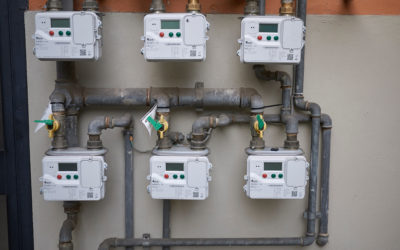Why Let Device Constraints Constrain Your Business Potential?
19
October 2020
by Eliav Gnessin
Solving with Firmware Innovation
Embedded computing devices deployed within the Internet of Things (IoT) have, for years, been challenged with the ability to compute given minimal resources.
Constraints include memory and processing capabilities and the low-power radio standards utilized as network interfaces.
Product companies and Solution providers need inexpensive computing devices at scale – not just a few dozen, but tens of thousands and even hundreds of thousands that are small, affordable, and reliable, especially for distributed implementations (for example, an entire smart city using controlled LED lighting).
The ability to network embedded devices opens up endless opportunities to develop new applications in homes, buildings, and public spaces. The value of the IoT is found in new computing services that integrate existing software services already available via the Internet with the control and data gathering capabilities of embedded devices.
Technology improvements following Moore’s law (the value of the network is based on the number of endpoints on the network) are making embedded devices more economical, smaller and more energy-efficient but not necessarily more powerful. Mass adoption equals mass production, which has contributed greatly to the growth of the IoT and Industrial IoT.
The challenge today, however, are expectations for edge devices to do a lot more work than they have previously done, and that takes more CPU power, memory, and storage capacity.
The rapid advancement and roll out of 5G wireless IoT services are exacerbating the challenge while also opening up new innovation opportunities – the networks will be amazing, but what about the edge? How do we create devices that are both powerful and resource-efficient, rugged, and affordable?
Embedded devices used in the IoT need to possess computational capabilities for the task they must perform, security, and networking abilities allowing integration with the Internet. To minimize product costs, IoT devices are to be equipped with low-power, constrained resources, combined with a production-grade, low-footprint IoT client that allows utilizing the full capabilities of the chipset.
Similar Blogs
As Alternative Energy Sources Rapidly Emerge New Connected Field Service Solutions Using IoT Are Paramount
In the past few years, utilities have been at the forefront of the IoT revolution, with smart metering leading the way. Cloud of Things is proud to be part of several projects, contributing to smart metering solutions which leverage our DeviceTone IoT suite.
When Programmable IoT and Cellular Merge, It’s Time to Spin Up Solutions
Most IoT research and development over the last two decades has been focused on data acquisition, real time edge and cloud applications and analytics, machine learning, data visualization, automated control systems, and other natural topics. Massive value has already been created in IoT and Industrial IoT (IIoT) but we are still only at the beginning of a world where billions of endpoints will be connected and will need to be secured (now more than ever).
As Alternative Energy Sources Rapidly Emerge New Connected Field Service Solutions Using IoT Are Paramount
The ongoing modernization of energy grids and sustainable energy sources and the integration of renewable energy and optimization of energy use have the potential to help us reverse the damage being caused by climate change.



